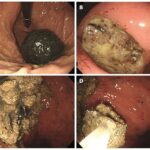Noroviruses are highly contagious viruses that cause gastroenteritis, commonly known as the stomach flu. Accurate and timely diagnosis is crucial for effective management and control of outbreaks. This article provides a detailed overview of Norovirus Diagnosis Tests, their methodologies, and their significance in public health.
Understanding Norovirus
Noroviruses belong to the Caliciviridae family and are non-enveloped, single-stranded RNA viruses. They are the leading cause of acute gastroenteritis worldwide, affecting individuals of all ages. Previously known as Norwalk or Norwalk-like viruses, they were identified following an outbreak in Norwalk, Ohio, in 1968. The most prevalent variants globally belong to the GII.4 genotype, with strains like GII.4 Sydney and GII.4 Hong Kong causing widespread illness.
Norovirus Classification and Variants
Noroviruses are classified into ten genogroups (GI-GX) and 48 genotypes. This classification system, updated in 2019, helps in understanding the diversity of noroviruses. Key changes in the classification include reclassification of certain genotypes and a standardized dual-typing nomenclature (genotype and P-type), such as GI.1[P1]. Understanding these classifications aids in tracking and studying norovirus epidemiology.
Types of Norovirus Diagnosis Tests
Diagnostic tests for norovirus are designed to detect either the virus’s genetic material (RNA) or viral antigens. These tests are vital for confirming norovirus infection and are available in public health and clinical laboratories. The primary and most effective methods include RT-qPCR assays.
RT-qPCR Assays: The Gold Standard for Norovirus Detection
Reverse transcription real-time polymerase chain reaction (RT-qPCR) assays are the preferred method for norovirus diagnosis. Their high sensitivity and specificity allow for the detection of minimal amounts of the virus, as low as 10 to 100 norovirus copies. These assays utilize specific oligonucleotide primer sets to identify genogroups GI, GII, GVIII, and GIX noroviruses. Furthermore, RT-qPCR can provide an estimation of the viral load, which can be valuable in understanding the infection dynamics.
TaqMan-based RT-qPCR assays are designed to detect norovirus RNA in various specimens, including:
- Stool: The most common and preferred sample for norovirus testing.
- Vomitus: Important for diagnosis, especially in outbreak scenarios.
- Food: Crucial for identifying the source of foodborne norovirus outbreaks.
- Water: Essential for investigating waterborne outbreaks.
- Environmental specimens: Swabs from surfaces to assess environmental contamination.
Multiplex Gastrointestinal Platforms: Streamlining Pathogen Detection
Commercial multiplex gastrointestinal platforms have emerged as convenient tools for detecting multiple pathogens simultaneously, including norovirus genogroups I and II. These platforms offer sensitivity comparable to RT-qPCR for norovirus detection, making them efficient for comprehensive gastrointestinal pathogen screening.
Enzyme Immunoassays (EIAs): Rapid Screening with Limitations
Rapid commercial enzyme immunoassays (EIAs) are available for detecting norovirus antigens in stool samples. While EIAs offer the advantage of speed, they have lower sensitivity (50% to 75%) compared to RT-qPCR. Therefore, EIAs are generally not recommended for diagnosing sporadic cases of gastroenteritis from single samples.
However, EIAs can be useful for preliminary norovirus identification in outbreak settings when multiple specimens need to be tested quickly. It’s crucial to confirm negative EIA results with a more sensitive technique like RT-qPCR. EIAs should not replace RT-qPCR in thorough outbreak investigations.
Genotyping: Unraveling Norovirus Strains for Epidemiology
Genetic characterization, or genotyping, of noroviruses detected in stool and environmental samples is invaluable for epidemiological investigations. Genotyping helps in:
- Linking cases: Identifying connections between individual cases to understand transmission patterns.
- Suggesting a common source: Pinpointing the origin of outbreaks, such as contaminated food or water.
- Identifying new emerging virus strains: Monitoring the evolution of noroviruses and detecting novel variants.
Norovirus genotyping is achieved through sequence analysis of RT-PCR products amplified from specific regions of the polymerase gene (region B) and capsid gene (region C). CaliciNet, a norovirus surveillance network, utilizes dual typing (genotype and P-type) for comprehensive norovirus characterization. A notable example is the GII.4 Sydney[P16] strain, which has been responsible for a significant proportion of norovirus outbreaks in recent years.
Specimen Collection for Norovirus Testing
The preferred clinical specimen for norovirus laboratory diagnosis is whole stool. In suspected food or waterborne outbreaks, collecting samples of the suspected source as soon as possible after exposure is critical. All collected specimens should be refrigerated immediately to maintain sample integrity until testing.
Reporting Norovirus Results
Healthcare providers are mandated to report all acute gastroenteritis outbreaks, including suspected norovirus outbreaks, to their local health department. Health departments are encouraged to report suspected and confirmed norovirus outbreaks through systems like the National Outbreak Reporting System (NORS) and CaliciNet. This reporting is essential for public health surveillance and outbreak management.
Conclusion
Accurate norovirus diagnosis tests are fundamental for managing and controlling norovirus infections and outbreaks. RT-qPCR assays stand as the most reliable method due to their high sensitivity and specificity. While other tests like EIAs and multiplex platforms have their roles, RT-qPCR remains the gold standard for definitive diagnosis and epidemiological investigations. Understanding the available norovirus diagnosis tests and their appropriate applications is vital for healthcare professionals and public health officials in combating this common and highly contagious virus.
